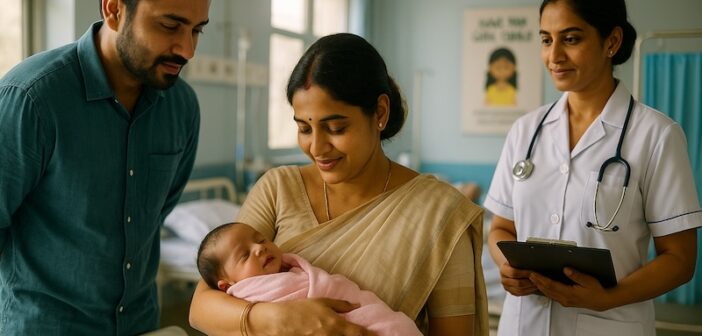TL;DR India’s 2023 vital statistics report shows the Sex Ratio at Birth has improved to 928, but remains below the natural 950, indicating ongoing gender bias. Meanwhile, some historically well-performing states like Karnataka have shown recent declines. States like Bihar and Jharkhand continue to report low figures.
Context
The government recently released the “Report on Vital Statistics of India based on the Civil Registration System (CRS) 2023,” offering valuable data on the registration of births and deaths across the country. Beyond its administrative function, the CRS serves as a crucial source for medical and demographic research, providing insights into sex ratios, mortality trends, and causes of death.
Among its key indicators is the Sex Ratio at Birth (SRB) based on registered birth events, which is calculated as the number of female births per 1,000 male births, reflecting gender equity and social health at the very start of life. The SRB in the CRS reports is derived from registered birth events after deducting delayed registrations exceeding one year, ensuring greater accuracy and comparability across years. With the Level of Registration (LoR) of births rising steadily and now reaching near-universal coverage of 98.4% in 2023, the CRS has become an increasingly robust and credible source for assessing India’s actual sex ratio at birth.
Who compiles this data?
The “Vital Statistics of India based on the Civil Registration System” is a comprehensive annual report published by the Office of the Registrar General of India (ORGI), which presents detailed data and analysis on the country’s birth and death registrations. It is compiled from data submitted by every State and Union Territory. This entire process is governed by the Registration of Births and Deaths Act, 1969, which is enforced by a Chief Registrar within each state and administered by the ORGI at the national level.
Where can I download clean & structured data on Births & Deaths in India?
Clean, structured, and ready-to-use dataset on births and deaths from the Civil Registration System (CRS) is available for download on Dataful. It provides insights on year, state, region, and gender-wise births and deaths registered, infant births, still births and so on.
Key Insights
- India’s sex ratio at birth, based on registered events, stood at 928 females per 1,000 males (excluding Sikkim) in 2023. This marks a considerable improvement from 903 in 2007, which had declined to 877 in 2016.
- In the absence of sex selection, the natural sex ratio at birth is about 105 male births per 100 female births or roughly 950 female births per 1,000 male births. In India, however, the ratio remains lower, indicating that the country still has a long way to go to achieve balance.
- The data indicate a decline in the SRB for some southern states, which were once known for relatively balanced sex ratios. For instance, between 2007 and 2023, Karnataka’s SRB decreased by 57 (from 1,004 to 947), and Andhra Pradesh’s SRB decreased by 43 (from 974 to 931). Kerala’s SRB declined marginally from 971 in 2022 to 967 in 2023.
- In the long term, Punjab and Haryana’s SRB improved. However, the most recent data shows that both states, along with Bihar, Jharkhand, Uttar Pradesh, and Chandigarh, have experienced a significant decline in SRB since 2020. Their SRB in 2023 stood lower than the national value. Jharkhand was the only state to register a value below 900.
- Arunachal Pradesh, Nagaland, and Ladakh are the only states/UTs to have registered more females than males at least twice in the last 5 years. On the other hand, the northeastern states of Meghalaya and Mizoram saw a fall in SRB in 2023.
Why does it matter?
Sex Ratio at Birth, derived from CRS data, serves as a key demographic indicator reflecting gender bias at birth. With the 2021 Census yet to be conducted, the annual CRS report currently offers the most comprehensive and up-to-date official data source for monitoring sex ratio trends in India. The 2023 report reveals a mixed reality. While India’s overall SRB has improved, it remains low at 928, proving that gender-biased sex selection continues. Furthermore, recent declines in some southern states and key northern states show that progress is fragile. This is despite having measures preventing sex selection in the country.
Key Numbers
- India’s SRB: 903 (2007) → 928 (2023) females per 1,000 males
- Birth Registration Coverage (LoR): 98.4%
- Southern States: ↓ in SRB between 2007 & 2023 (AP, Karnataka, Kerala)
- Northeast & Hill States: ↑ SRB > 1,000 in Arunachal Pradesh, Nagaland, Ladakh ; ↓ in Meghalaya, Mizoram



